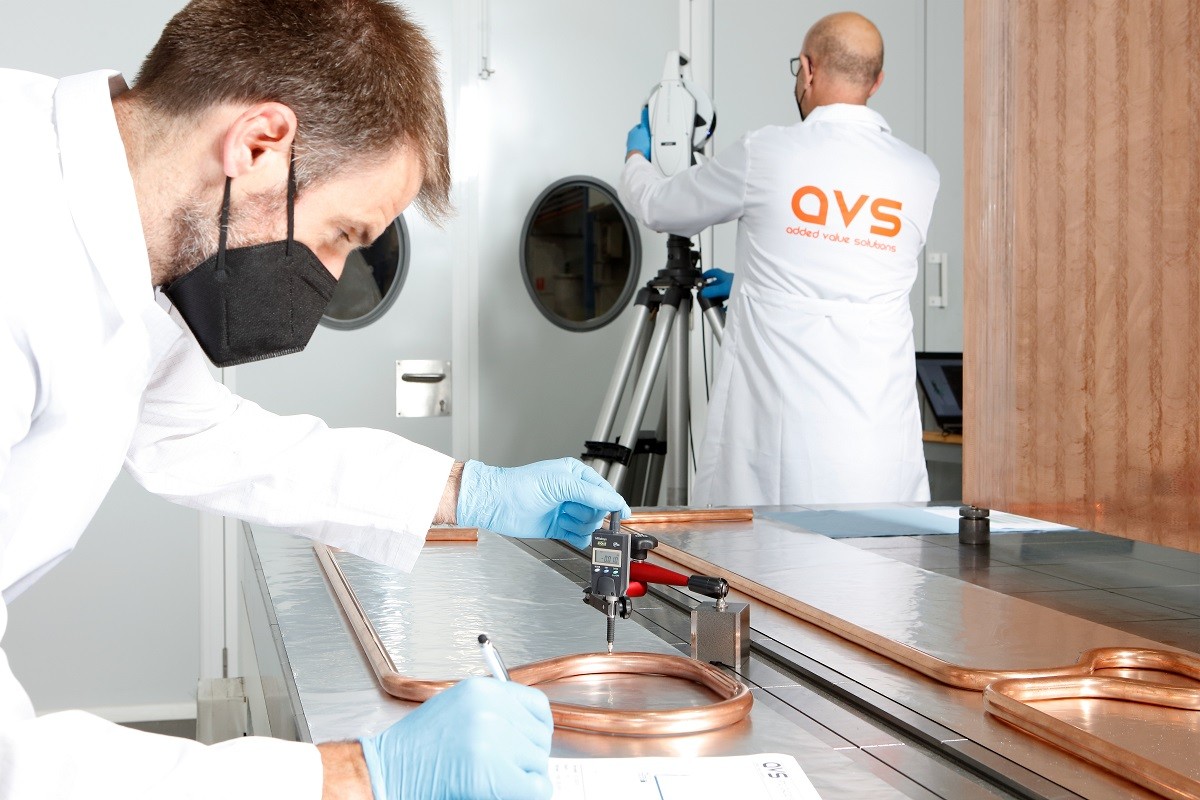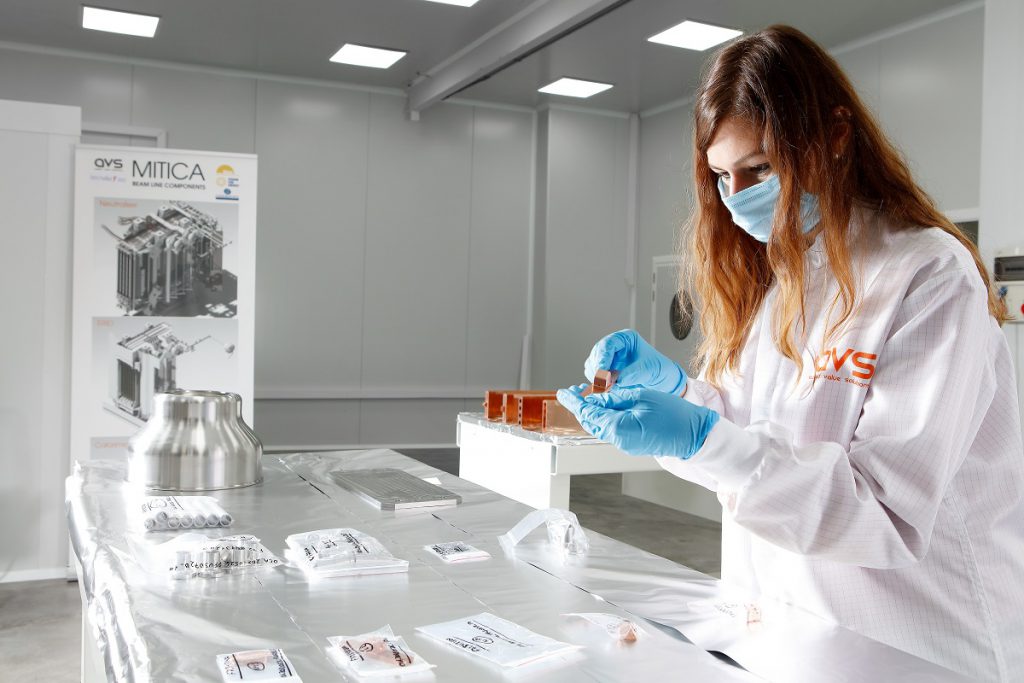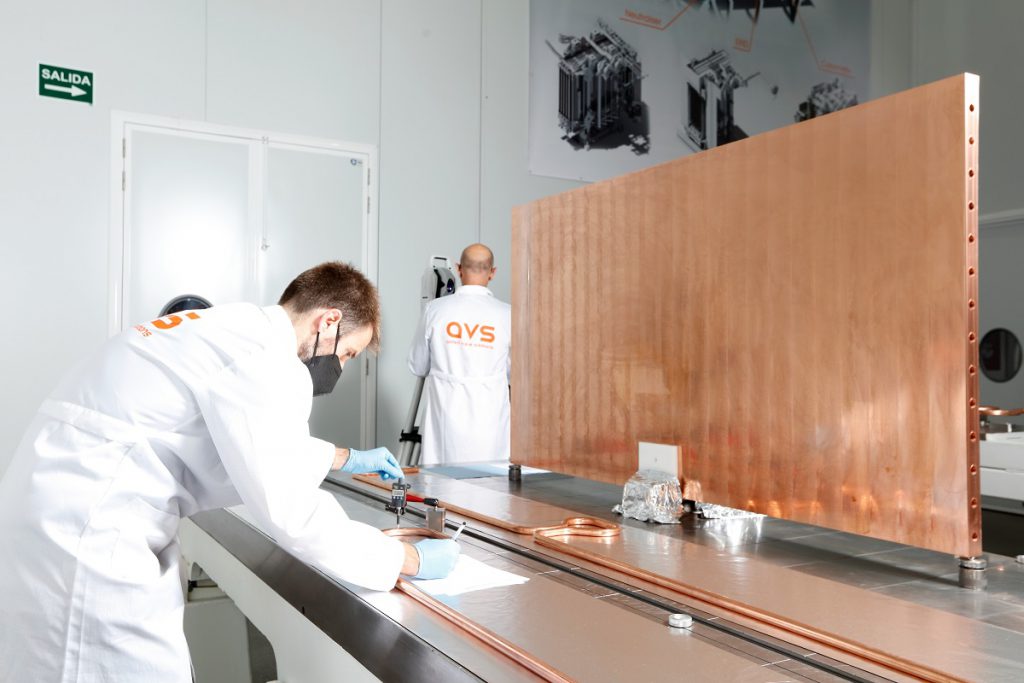How are the MITICA beam line components shaping up?

Performing dimensional measurements on one of the 200 calorimeter tubes to be produced, AVS, Spain, November 2021.
Heating systems and power supplies can be described as the fire starters of the ITER project. They will use their “artillery” to target locally parts of the plasma in order to raise its temperature and keep it burning. Given that no other fusion device has operated using such wide range of technologies, engineers will have to test these systems and qualify them, prior to deploying them in ITER. As they are breaking new ground, a facility has been set up in Padua, north of Italy, to host MITICA, a powerful Neutral Beam Injector (NBI) able to deliver up to 16.7 MW of neutral particles at 1MeV of energy. The host of this prestigious infrastructure is Consorzio RFX. As part of a team effort, it relies on F4E, responsible for Europe’s contribution to ITER, Japan, and ITER Organization for the production of the components and the successful operation of this one-of-a-kind testbed.
Europe will deliver the beam source—the “engine” of MITICA, and the in-vessel components. End of 2019, F4E signed a contract with AVS–Tecnalia to produce the beam line components. They consist of the neutraliser, the electrostatic residual ion dump, the calorimeter and auxiliary equipment. All of these pieces will be aligned with the beam source, and subsequently be installed in the vacuum vessel’s adjustable beds. In November, our team of experts travelled to the production site to witness the progress.

The first piece of good news is the completion of the manufacturing readiness review for the critical parts of the equipment. This is the stage that determines whether fabrication can start. After having received the go ahead, the technical team purchased the required materials, qualified processes and started producing the first pieces of equipment. The F4E team was present during the dimensional checks of the first produced calorimeter tubes, out of approximately 200 needed. In parallel, a great deal of prototyping is advancing, such as the welds joining different materials and the ceramic insulators for the electrostatic residual ion dump. AVS has also qualified the critical process of deep drilling, required for the production of some components. This is an extremely delicate and time-consuming task, which requires high precision and expertise. Finally, the development of a new cold extrusion machine is in progress to produce the manifold of the calorimeter.

Gonzalo Micó, F4E Project Manager following this contract, visited AVS and shared some of his thoughts on the progress so far. “It was good touching base with our suppliers in person and seeing how our components are shaping up. The pandemic did not pose so much of an obstacle to the works but it did keep us apart. This visit gave us the opportunity to meet as one team, perform some technical tasks together and discuss the next manufacturing steps. We are working full speed to complete the beam line components in time for MTICA.”

We also had the opportunity to speak to Jose Miguel Carmona, AVS Head of Fusion and Beams Area, who gave us more background. “In spite of the overall complexity of the project, we have successfully addressed risks and developed mitigation techniques. We released more than 800 documents and 2000 drawings received the go ahead for production. The fabrication of first critical path units, covering all the final manufacturing steps, has successfully finished, ensuring a smooth and risk-free series production. Consequently, the level of manufacturing has increased rapidly for those elements. The team spirit and efforts of AVS-Tecnalia, ITER Organization, Consorzio RFX and F4E have paid off.”
Muriel Simon, F4E Programme Manager for Neutral Beam & Electron Cyclotron Power Supplies & Sources, offered her view on the overall progress of the contract and the partnership with all parties involved in the MITICA test facility. “We are pleased with the comprehensive strategy developed by AVS-Tecnalia to produce these technically-demanding components, even more so, taking into consideration the challenging times posed by the pandemic. The frequent and open exchanges between the parties involved in MITICA, F4E and its contractors, have created a solid team built on trust and expertise. Through this collaboration, we will acquire new know-how which will be valuable to ITER and other fusion experiments.”